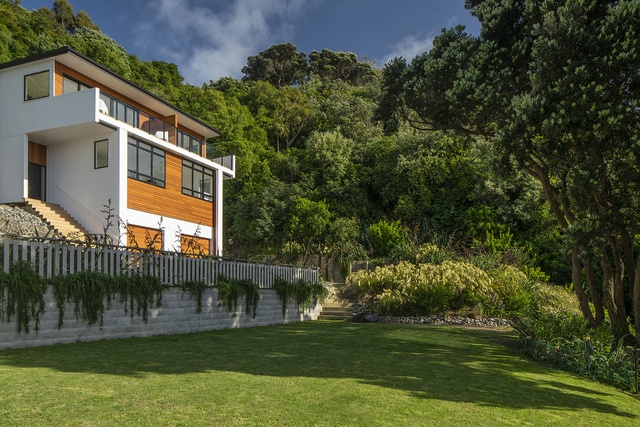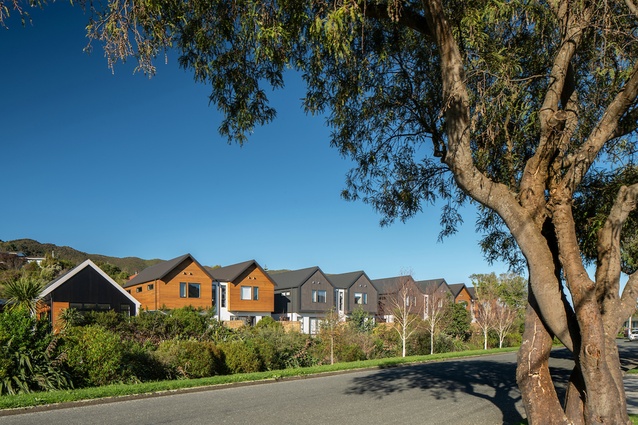[ad_1]
Ashley Cusick (AC): What can architects and designers do right now to address the lack of housing in New Zealand?

James Solari (JS): We need to continue to be a larger part of the conversation and this includes advocating and striving for high quality (internal and external) urban spaces and places. We need to put people first and think of designing homes, not just houses. Architects and designers can increase density in the developments they work on without compromising quality. We have a once-in-a-lifetime opportunity right now to make a meaningful contribution to the future of New Zealand. We need to learn how to shift our skills in creating wonderful, bespoke single homes for those who can afford it to creating quality homes for all. Architects need to hone their skills in balancing quality with economic feasibility.
Understanding the delivery mechanisms of property development and engaging more with the notion of housing being considered as infrastructure will assist the profession in being part of what could be an incredibly exciting time for us. Ultimately, all these big issues – housing and climate change, for example – will require industry-wide solutions.
AC: Have you worked on any medium-density projects recently that have been examples of good steps forward?
JS: We have recently been working on a medium-density project in Lower Hutt. The project replaces a single, tired three-bedroom house with 14 new apartments including a mixture of one, two and three-bedroom configurations. Our design is a direct response to the site and the opportunity provided by the recent Plan Change 43 zoning. The new zoning encourages and facilitates medium-density housing up to three storeys from the previous two-storey general residential zoning.
The National Policy Statement [on Urban Development] was also introduced during our design process. We were able to adapt our design to remove five carparks as a trade-off for more residential amenity. By freeing up our reliance on parking, we were able to provide a greater emphasis on the design quality on what is a relatively compact site.
Additionally, we have an exciting new project of 80 apartments for Kainga Ora in Wellington’s city fringe Mt Cook under construction. We are replacing 50 apartments, with a historically poor social housing stigma, with new homes that will create a hub and heart to the local community.
Central to the success is a community space that not only supports the tenants but opens up to the neighbours. As we engage more on the conversation of intensifying our inner suburbs, this project will be an exemplar of how we can sensitively integrate modern living solutions of scale.

AC: Do you have any thoughts about how the new National Policy Statement on Urban Development might affect housing projects like this? Are there any challenges that might come along with recent policy changes?
JS: There are some good steps forward. For example, a focus on promoting higher density around local centres and transport nodes and a shift towards less prescription around car parking. The opportunities are obvious – for once we have an overarching focus on creating higher density and the ability to do so without having to somersault through fiery hoops while juggling five balls. The challenge will be defining New Zealand’s identity in medium density.
At a city-wide level, people are pretty supportive of increased density and the benefits it brings. At an individual site level, not so much! Enabling development on paper is all good but how is that implemented? The benefits of increased density need to be felt by people, and they need to see those benefits up front in improved public spaces: streets, parks, walking and cycling tracks; better recreation facilities; improved infrastructure, cheap and efficient public transport and the promotion of safe alternatives to cars such as designated cycle tracks; lower housing costs, improved/low impact water services, e-charging points. All of these things support higher density and/or should be the result of higher density, but they need city/region-wide vision and implementation, as well as just site specific implementation. People need to see the benefit of that now, not in 30 years.
The shift towards considering the positive benefits of a proposed development and its future amenity should result in a focus on design quality, which is so important in more complex higher density development solutions. The National Policy Statement is lacking in the detail of how this will be achieved. It is a difficult balance between enabling development through permitted/non-notification standards, whilst retaining checks and controls on design quality.
There will be challenges around matching public transport options to developments with less than one carpark. While car parking may not be a requirement, it still requires much thought to determine what the right balance of parking to non-parking is (not to mention advancements in technology which may even make cars redundant in the not-so-distant future).

AC: To me, one of the massive problems facing New Zealand’s embracing of higher density living is the cultural attitudes towards it. Would you agree?
JS: I think people see the positives in lower maintenance, higher quality new homes in vibrant urban areas. People are worried about low-quality, high density being forced upon them and so there is much focus on what is being ‘lost’, not what can be gained. New Zealand’s urban areas are currently extremely low density. Higher density can, and should be, the main focus of new urban development. There is great opportunity for high-quality, New Zealand-specific urban density that is developed through a focus on positive, well-designed outcomes. Housing standards should be increased over time. Much of the current housing offering merely creates a set of ‘single dwellings’ packed closely together, rather than exploring the opportunities of higher density. As a result, we only recognise them as a poorer outcome of houses and gardens (if any) squished together rather than a new typology all together.
AC: How can we ensure that higher density housing retains a high standard of design quality?
JS: There’s a few things we can do to ensure higher density housing retains a high standard of design quality like investing in public space, infrastructure and resources to support higher density; creating design guidelines that promote general objectives, not prescriptive rules; focusing on the benefits of every project – not just at a site level, but at a street and city level; making sure the benefits of good design and density are communicated – this will lead people to demand more of their homes; increasing collaboration between architects, Government, councils, public/private development consultants and communities; and using architects on higher density projects with a proven track record of delivering at this scale.
Overall, we ensure quality by thinking about the density as an opportunity rather than a restraint. The design focus should be on the new positive aspects of living medium density brings that lower density cannot offer.
[ad_2]
Source link










